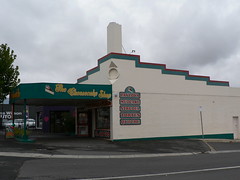 This Cheesecake Shop in Bendigo looks like a former service station to me with the driveway now providing undercover parking for people picking up their desserts and cakes.
This Cheesecake Shop in Bendigo looks like a former service station to me with the driveway now providing undercover parking for people picking up their desserts and cakes.
The roof steps down from the vertical fin on the corner of the building. Decorated in the corporate livery it really makes the shop stand out.
Another interesting feature is the porthole set back where the front and side wall meet. I don't know whether this is a window that has been covered or if it was an original design feature.
Friday, April 10, 2009
Cheesecake Shop, Bendigo
Thursday, April 9, 2009
Lonsdale House, Melbourne
As reported in today's Age the battle to save the building continues with the Art Deco and Modernism Socety and National Trust on one side, Colonial First State Management Company and Myer on the other and the State Planning Minister, Justin Madden in the middle.
In 1934, architect I G Anderson combined two earlier structures to create this unusual building which explains the asymetrical look.Colonial have applied to the State Government for permission to demolish Lonsdale House. They are quoted as saying "Caledonian Lane needs to be widened to cater for the servicing requirements of this part of the city's retail core, and this necessitates the demolition of Lonsdale House". In other words, we need to destroy this beautiful building so we can get the trucks into the back of our shop.
Colonial go on to say "We are proposing to retain the major heritage facades to Lonsdale Street and Little Bourke Street without compromising the future functionality of the redevelopment of this iconic site."
No doubt the 'major heritage facades' refer to the Myer itself, not Lonsdale House.
The geometric tower on Lonsdale House is a Melbourne icon. I urge Colonial First State Property Management and Myer to find a way to retain this iconic building rather than have their names forever associated with this act of corporate vandalism.
I further urge Minister Justin Madden to reject their application and protect this wonderful piece of Melbourne heritage.
Wednesday, April 8, 2009
Bar Royal, Asmara
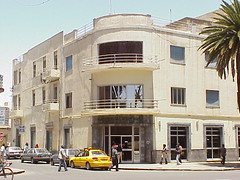 There are so many fantastic buildings in Asmara that sometimes you don't know where to look next.
There are so many fantastic buildings in Asmara that sometimes you don't know where to look next.
This is Bar Royal, a chic cafe on a busy corner. And it is the way that this building addresses the corner that makes it stand out.
The facade is quite plain and curves in a smooth arc around the corner with the cafe entrance set back a little from the footpath. Above the door, two metal-railed balconies follow the curve of the building.
It goes some way to explaining what an extraordinary place Asmara is to say that this is just another building in this amazing city.
Monday, April 6, 2009
Woolworth Walk, Asheville
 This 1938 former F W Woolworth Co store in Asheville, North Carolina has been setup as Woolworth Walk, a space designed to showcase the works of local artists.
This 1938 former F W Woolworth Co store in Asheville, North Carolina has been setup as Woolworth Walk, a space designed to showcase the works of local artists.
Inside, a classic American soda fountain has been recreated.
Not only is it excellent that the building has been reused but in a similiar way to the Hoover Building in London, the original signage has been retained.
Seen in close-up, the decoration above each of the windows on the facade is quite spectacular.
Sunday, April 5, 2009
Boston Manor Tube Station, London
The resulting building is a low square structure with a circular ticket box at one end and rising above it a brick tower bearing the London Underground roundel.
The leading edge of the tower is made of glass which is light up at night to further draw attention to the tube station from the surrounding district.
Saturday, April 4, 2009
Grundy's Shoes, Glenelg
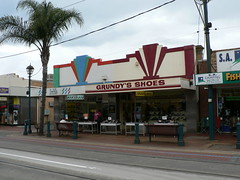 This matching pair of art deco shops are in jetty Road, Glenelg.
This matching pair of art deco shops are in jetty Road, Glenelg.
As we look at them, Judd's the more colorful of the two is on the left and Grundy's Shoes is on the right.
I think the two-tone decoration of Grundy's works better that the multi-colour detailing on Judd's.
Friday, April 3, 2009
former Lifeboat Station, Blackpool
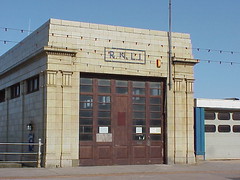 I see in the March 25th editon of the Blackpool Gazette the 1937 former lifeboat station on the Promenade has been demolished by the local Council. Apparantly it was in the way of their new sea defences and couldn't be saved.
I see in the March 25th editon of the Blackpool Gazette the 1937 former lifeboat station on the Promenade has been demolished by the local Council. Apparantly it was in the way of their new sea defences and couldn't be saved.
I photographed it in 2001 when it appeared to be empty. By that stage the lifeboat crew had a new station further along the shore.
Since then, though, this building has been used as a beachside kiosk selling buckets and sapdes, ice creams and, no doubt, Blackpool Rock as can be seen in Mike Key's 2006 photo on flickr.
I had a glimpse inside through the dusty windows and to me it looked magical illuminated by shafts of sunlight.
The stepped decoration of the white tiles against the blue on the mezzazine level are pure deco and you can just make out more decoration with narrow orange tiles.
Wednesday, April 1, 2009
Sport @ Manchester Unity Building, Melbourne
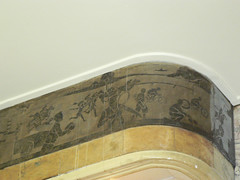 The foyer of the Manchester Unity Building (Marcus Barlow, 1932) features many panels depicting aspects of Australian life, the services of the Manchester Unity IOOF, virtues and other themes.
The foyer of the Manchester Unity Building (Marcus Barlow, 1932) features many panels depicting aspects of Australian life, the services of the Manchester Unity IOOF, virtues and other themes.
The most obvious panels are made of plaster and form the cornice of the foyer and shopping arcade. Variations and different styles are presented on other floors and in the fabulous boardroom.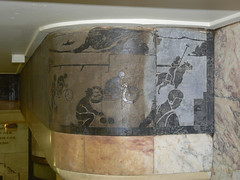 Less obvious are the black panels above the escalator and there are still others on the other side of the ceiling recess that are difficult to see except while riding the escalator.
Less obvious are the black panels above the escalator and there are still others on the other side of the ceiling recess that are difficult to see except while riding the escalator.
One particular panel which curves around near the top of the escalator shows many types of sport including a rare depiction of Australian Rules Football in art deco style.
A surprising aspect of the panel is that cricket is not very prominent. In this section of the panel there is an aeroplane in the top left and directly below that, a batsman at the completion of a shot. In comparison, the foxhunting (?), racing car and in particular the footballer are very prominent.

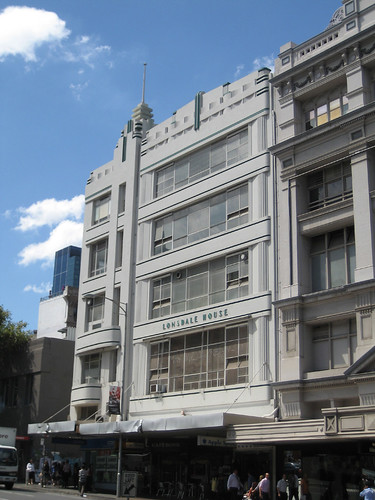

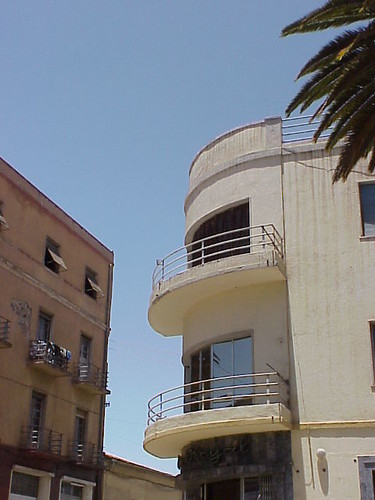
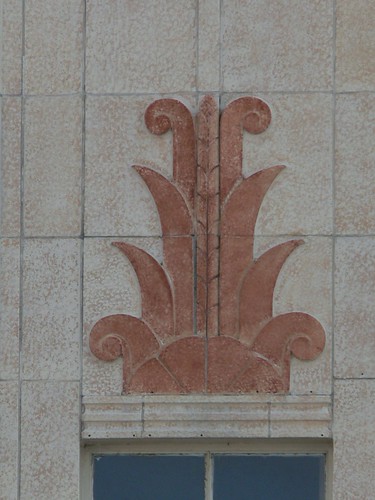
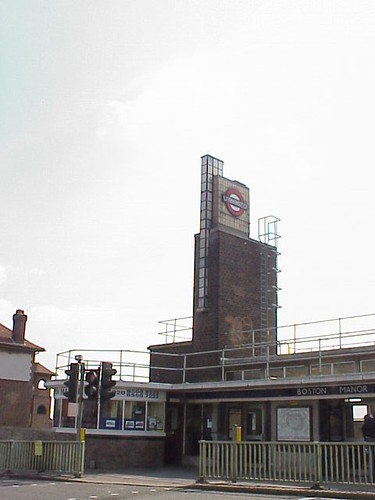
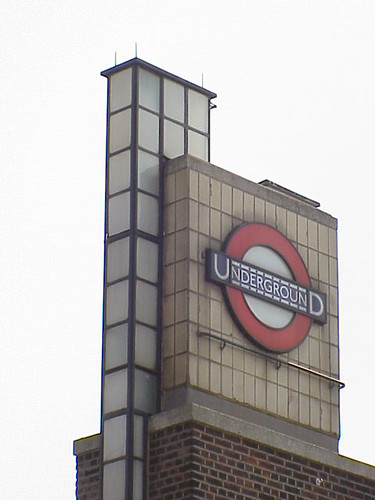
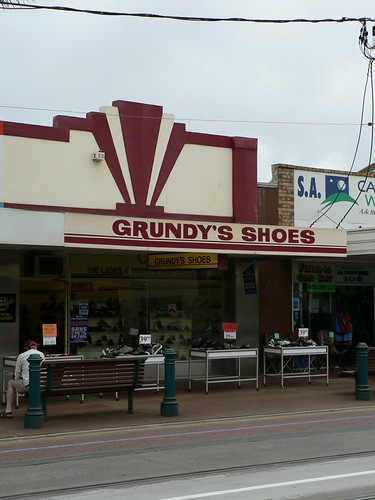
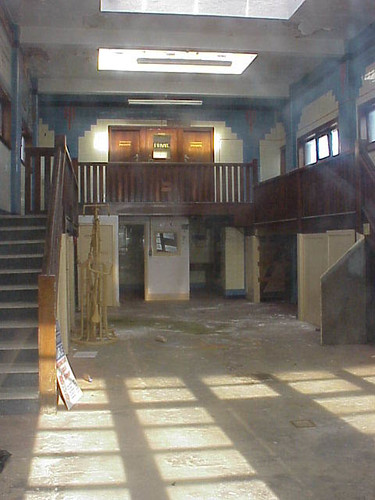
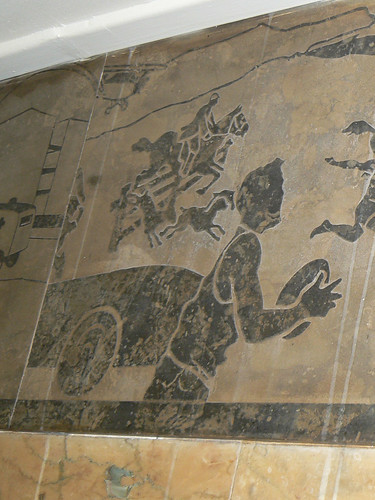
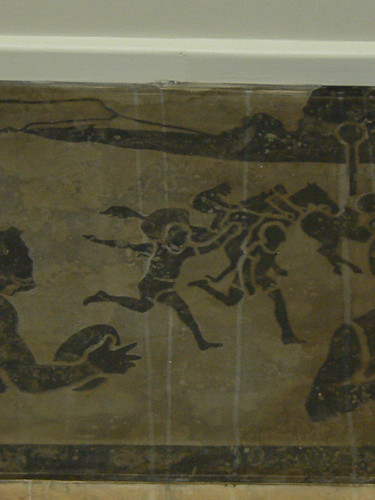
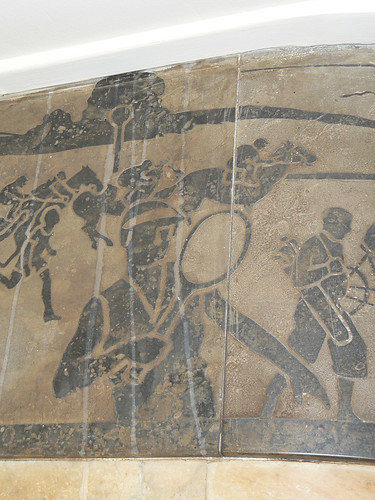
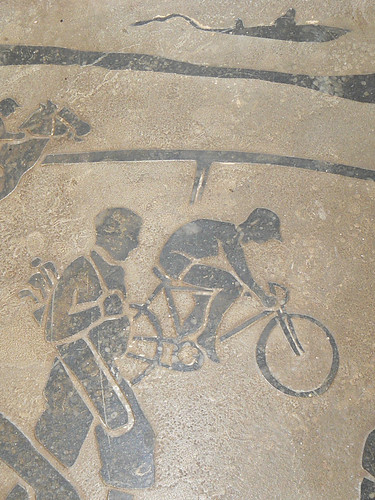
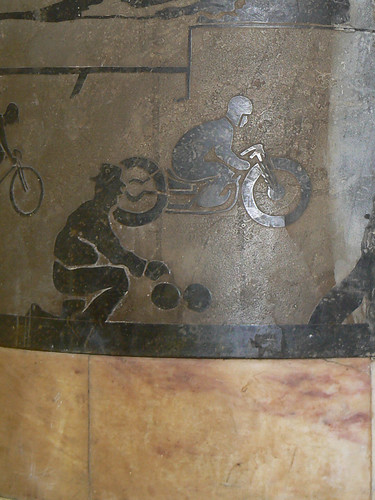
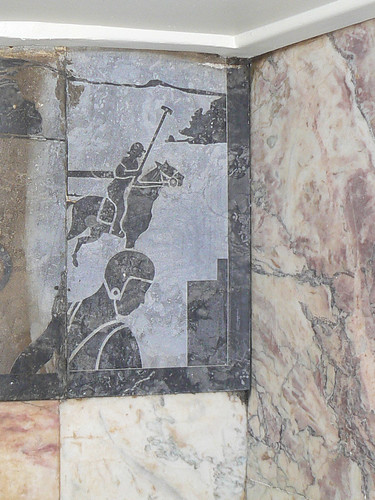
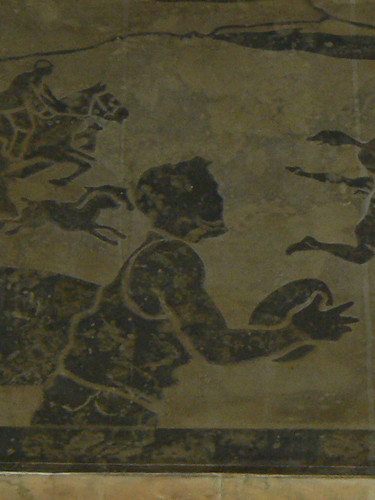








































.jpg)














